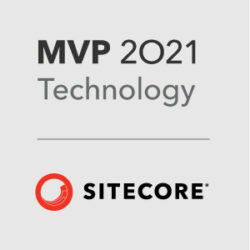Wanted to share something cool and powerful. Not sure if you all are already aware, but, pretty awesome, so wanted to share regardless.
Goal – “To get descendants under an item in the content tree that are of specific template ID “
Many straight forward ways to achieve this. Like loading a VM on controller or a new property by casting and doing bunch of queries.
We are close to a launch and typically at this time, more code would mean more bugs and additional effort to resolve those. I wanted to avoid this as much as possible.
So, I tried loading what I needed through Glass like below. That is it, Just two lines of code and everything loaded as I wished for. J
No casting, no object massaging, nothing at all. So cool and yet so powerful. It could come in handy for you all when working with hierarchical data.
[SitecoreQuery(“.//*[@@templateid='{A5617868-1226-4C7F-89A7-C7355BD1532A}’]”, IsRelative = true)]
public virtual IEnumerable<MyTemplate> itemsOfMyTemplateUnderCurrent { get; set; }
Glass documentation helped me get a clue, but, it was more about children only and also note for some reason the sample format given by Glass did not work in case of descendants atleast.
Notice the {} around GUID of template, my second try and wohoo!!! everything loaded in the object as I needed and wished for.
Helpful reference:
